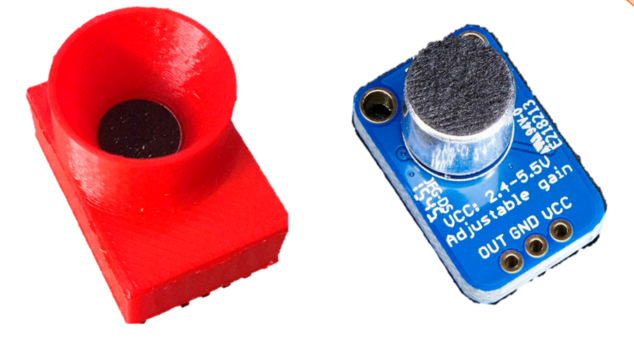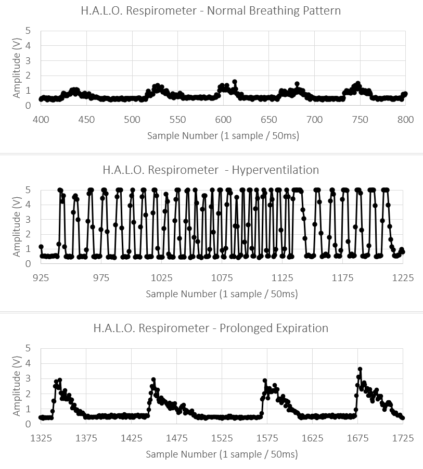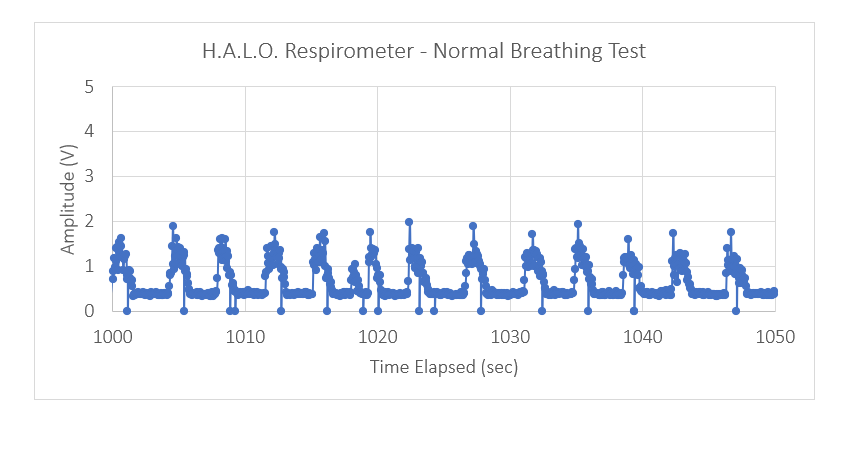Respiration Monitor - H.A.L.O. Mk. 1
Monitoring the pilot’s breathing pattern can help warn users of possible health conditions such as respiratory illness associated with poor cabin air quality, loss of consciousness, or even stress. Using a respirometer to record the amplitude and frequency of breath can help determine numerous breathing patterns, including but not limited to: tachypnea, bradypnea, apnea, hyperpnea, etc.
The respirometer for this device is made using a high-sensitivity microphone which is able to detect amplitude and frequency of breath using sound. The microphone is small, with dimensions of 9.7 x 4.5mm, and is affixed onto the headset microphone. A 3-D printed PLA plastic case is also used to funnel sound towards the microphone. This setup can be seen in the image to the right.


To test the microphone, the acquisition program was run and data was recorded for 5 minutes. Since the program calculated respiration rate over 15 second intervals, this yielded 20 data points which were averaged and compared to manual counting of breaths taken. This test was run three times, and the standard error was calculated to be 2.5%. Statistical analysis also showed that there is no statistical significance between the device mean and the calculated mean with a 95% confidence.
As shown in the graphs above, different breathing patterns are easily distinguished with the use of this device. Future prototypes of this device would include an acquisition program that could recognize different breathing patterns so that the user does not need to rely solely on self-interpretation.

